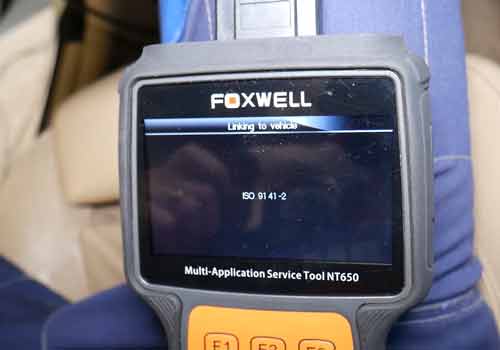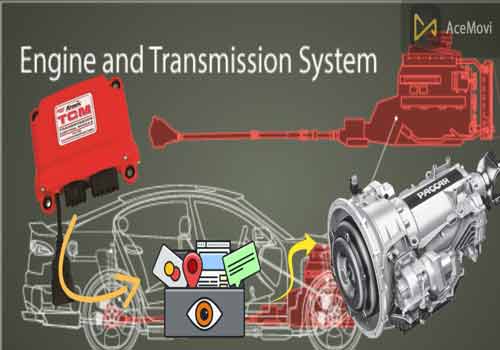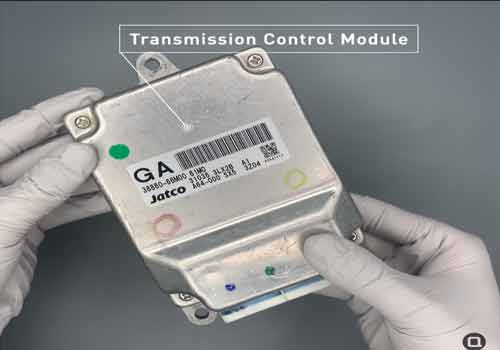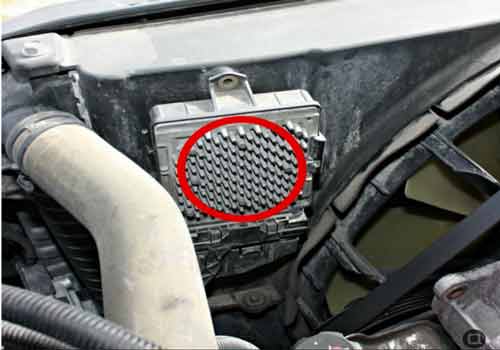How To Fix Transmission Control System Mil Request
The transmission control system monitors the transmission for proper operation. If it detects a problem, it will set a diagnostic trouble code (DTC) and turn on the MIL. The most common cause of a transmission control system mil request is a faulty shift solenoid.

- Check the transmission control system for any error codes
- If there are any error codes, clear them and see if the MIL request goes away
- If the MIL request does not go away, check the transmission fluid level and quality
- If the fluid is low or dirty, flush and replaces the fluid according to the manufacturer’s specifications
- If the problem persists, have the transmission control system checked by a qualified technician
Please read below to know more about How To Fix Transmission Control System Mil Request.
How To Fix Transmission Control System Mil Request
Transmission Control System Mil Request is caused by several causes. Here will show different causes and how to fix them:
1. Causes of low fluid:
The main cause of the Transmission Control System Mil Request is the law fluid. It can lead to a bad machine life and Transmission Control System Mil Request.
Normally, when the car is running, the transmission fluid heats up and expands. The fluid pressure in a transmission case increases with temperature rise and when it reaches the maximum threshold, it triggers a Transmission Control System Mil Request to stop driving temporarily.
It will be fixed by selecting the transmission fluid and checking and replacing the fluid.
2. Shift Solenoid if failed:
Shift Solenoid if failed, is the shift solenoid is not working correctly. When the car has Fault Code P0300, Shift Solenoid if failed means that the transmission is shifting from Park to drive and vice versa with the help of solenoid.
After replacing and testing the shift solenoid, you need to check the wiring harness connections and also the side wall seal for leakage. If there was no leakage, then you can also check for a loose connection between the shift lever and the transmission case.
3. Scan of codes:
You need to scan the codes and check the P0300 code. If the fault is from the transmission system, then you need to repair it.
4. The body of the transmission valve is bad:
The transmission valves should be changed if it is more than 5 years old. Replacement of the Transmission Control System Mil Request with the new valves will help to reduce driveability problems.
What Does Transmission Control System (Mil Request Mean)
If you’re like most people, you probably don’t know what a transmission control system is, let alone what the MIL request means. But if your car has an automatic transmission, then your vehicle likely has a transmission control system. So what is this system and what does the MIL request mean?
The transmission control system is a computerized system that controls the shifting of gears in an automatic transmission. The MIL request stands for “malfunction indicator lamp.” This is the warning light on your dash that comes on when there’s a problem with your car.
If the MIL request comes on, it means there’s a problem with your transmission control system. There are several reasons why the MIL request might come on. It could be something as simple as a loose wire or blown fuse.
Or it could be something more serious, like a faulty sensor or solenoid. Either way, it’s important to have the problem checked out by a qualified mechanic as soon as possible to avoid further damage to your car.

Read More About How to fix Transmission over Temp jeep
P0700 Transmission Control System (Mil Request)
If your car is displaying a P0700 code, it means that the Transmission Control System (TCS) has requested a MIL (or Malfunction Indicator Lamp). This is usually due to a problem with the transmission, and will often require professional diagnosis and repair. There are a few things that can cause a P0700 code to be displayed.
One possibility is that there is an issue with the TCS itself. Another possibility is that there is a problem with one of the sensors or solenoids that the TCS uses to monitor and control the transmission.
Any of these issues can potentially lead to problems with shifting, and may eventually result in damage to the transmission if not addressed.
If you see a P0700 code on your car’s display, it’s important to have it checked out as soon as possible by a qualified mechanic. They will be able to diagnose the problem and let you know what needs to be done to fix it. In some cases, simply replacing a faulty sensor or solenoid may be all that’s needed.
However, more serious problems may require major repairs such as rebuilding or replacing the transmission. Regardless of what’s required, it’s important to get any necessary repairs done promptly in order to avoid further damage.
Transmission Control System (Mil Request Cost)
The Transmission Control System (TCS) is a Mil-Spec system that was designed to provide cost-effective, reliable, and secure communications between military users.
The TCS provides a variety of features that allow users to communicate with each other, as well as with civilian counterparts. The system can be configured to support both voice and data communications and can be used in a variety of settings, including on the ground, in the air, and at sea.
How to Fix P0700 Code
If you have a P0700 code, it means that your car’s transmission control module (TCM) has detected a problem with the transmission. This can be caused by a number of different things, so it’s important to diagnose the problem before trying to fix it. One possible cause of a P0700 code is a faulty transmission shift solenoid.
If this is the case, you’ll need to replace the solenoid in order to fix the problem. Another possible cause is a faulty transmission pressure sensor. Again, replacing the sensor should take care of the issue.
If neither of these solutions fixes your P0700 code, then it’s likely that there is an issue with your car’s TCM itself. In this case, you’ll need to take your car to a mechanic or dealership for further diagnosis and repair.
What Causes Transmission Control System Malfunctions
If your car is having trouble shifting gears, it may be experiencing a transmission control system (TCS) malfunction. This can be caused by a number of different things, ranging from low fluid levels to dirty sensors. Let’s take a closer look at some of the most common causes of TCS problems.
One of the most common reasons for a TCS malfunction is low fluid levels. If your car’s transmission fluid is low, it can cause the gears to slip and prevent the TCS from working properly. Be sure to check your transmission fluid level regularly and top it off if necessary.
Another common cause of TCS problems is dirty or faulty sensors. The sensors in your car’s transmission control system help it determine when to shift gears. If they become dirty or damaged, they may not be able to correctly send signals to the system, causing it to malfunction.
You should have your Transmission Control System (TCS) serviced regularly to avoid this problem. If you’re experiencing shifting problems with your car, there’s a good chance that the Transmission Control System is to blame. Low fluid levels and dirty sensors are two of the most common causes of TCS malfunctions.
Be sure to keep an eye on your transmission fluid level and have your TCS serviced regularly to avoid these issues.

Transmission Control Circuit
A transmission control circuit is a device that controls the operation of a transmission, usually in response to signals from sensors or switches. Transmission control circuits are found in both automatic and manual transmissions. In an automatic transmission, the transmission control circuit controls the shifting of gears in response to speed and load changes.
In a manual transmission, the transmission control circuit may activate a clutch or shift interlock in response to signals from sensors or switches.
What Does Mil Request Mean
If you’re in the military, you may have heard of the term MIL-REQ. But what does it mean? In short, MIL-REQ stands for Military Requirements.
This includes things like your age, physical fitness, education, and other qualifications. For example, one MIL-REQ is that you must be at least 18 years old to enlist in the United States Armed Forces. Another common MIL-REQ is that you must have a high school diploma or equivalent.
There are many different MIL-REQs depending on which branch of the military you want to join. So if you’re thinking about enlisting, make sure you do your research and know what requirements you need to meet!
Where is the Transmission Control System Located
The transmission control system (TCS) is a critical component of a vehicle’s transmission. It is responsible for controlling the shifting of gears in an automatic transmission. The TCS is typically located in the transmission itself, but in some cases, it may be located in the engine control unit (ECU).
Either way, it is essential for the proper functioning of an automatic transmission.
What Does It Mean When It Says Transmission Control System Mil Request?
When your car’s check engine light comes on, it means that the On-Board Diagnostics (OBD) system has detected a problem. The OBD system monitors your car’s engine, transmission, and emissions control systems. If the OBD system detects a problem, it will turn on the check engine light to warn you.
The Transmission Control System (TCS) is one of the systems that the OBD system monitors. The TCS is responsible for controlling the shift points in your car’s automatic transmission. If the TCS detects a problem, it will turn on the check engine light and display a “Transmission Control System MIL Request” message.
If you see this message, it means that there is a problem with your car’s transmission control system. You should take your car to a mechanic or dealer as soon as possible so they can diagnose and fix the problem.
How Do You Fix P0700 Code?
If you have a P0700 code, it means that your vehicle’s transmission control module (TCM) has detected a problem with the transmission. This can be caused by a number of different things, so it’s important to diagnose the issue as soon as possible. One common cause of a P0700 code is a faulty shift solenoid.
The shift solenoids are responsible for controlling the flow of fluid to the transmission valves, and if one is not working properly, it can cause the TCM to detect an error.
Other potential causes include a dirty or failed transmission filter, low transmission fluid levels, or a damaged or malfunctioning output speed sensor. To fix a P0700 code, you will first need to identify the root cause of the problem.
Once you know what is causing the issue, you can then take steps to fix it. For example, if the problem is due to a faulty shift solenoid, you will need to replace it with a new one. If low transmission fluid levels are causing the issue, you will need to top off the fluid levels and check for leaks.
And if the output speed sensor is damaged or not functioning properly, you will need to replace it with a new one.

Read More About Grand Cherokee Overland vs Summit
How Much Does It Cost to Fix a Transmission Control System?
If your car is having issues with its transmission control system, it could be a minor problem or something more serious. Either way, it’s important to get it diagnosed and fixed as soon as possible. Transmission control system problems can lead to decreased fuel efficiency, poor vehicle performance, and even damage to the engine or transmission.
The cost of fixing a transmission control system will vary depending on the severity of the problem and which parts need to be replaced or repaired. In some cases, a simple software update may be all that’s needed. However, if there are damaged sensors or other hardware components, the repairs can be much more expensive.
If you’re experiencing problems with your transmission control system, take your car to a reputable mechanic or dealership for diagnosis and repair. They will be able to determine what is causing the problem and give you an estimate for the repairs.
What is a Transmission Control System Malfunction?
A transmission control system (TCS) monitors the engine speed and torque output and adjusts the gear ratio to match the driving conditions. If the TCS senses that the engine is overloaded, it will reduce the amount of torque being delivered to the wheels. This can cause a decrease in acceleration and an increase in fuel consumption.
A TCS malfunction can occur for several reasons, including a faulty sensor, low fluid level, or electrical issues. If your vehicle’s TCS light comes on, it indicates that there is a problem with the system and you should have it checked by a mechanic as soon as possible.
What are transmission control system MIL requests and other error codes?
The “transmission control system MIL Request” indicates that the car can not continue normal operation, and need to re-adjust the car transmission control system.
P-0700 is a generic code that is used by many systems, for example, the transmission control system, body control module, power steering system, and power train control module. The P0700 code means that the vehicle’s computer or anti-theft system has detected that the transmission is not operating properly.
The body control module (BCM) in your car monitors the engine and transmission to determine if they are acting properly. The BCM communicates with various sensors to monitor your car’s systems.
What happens if the transmission control system MIL request p0700 code comes back?
When the p0700 code and transmission control system MIL request comes back, it indicates a shift solenoid or communication problem within your vehicle.
You should take your vehicle to a transmission shop for further diagnosis. The P0700 code is common, and not all vehicles share the same causes. If you have this problem, you should have your car checked by the auto repair shop for inspection.
What are the most common causes of transmission control system MIL?
The most common cause of transmission control system MIL requests is the fluid in the transmission breaking down and overheating. The fluid is not able to transfer the power from the engine to the transmission.
This happens because of a lack of lubrication and a friction build-up which makes it harder for your car to move. When this occurs, eventually your car will need to have the transmission replaced.
Another common cause of transmission control system MIL requests is a bad shift solenoid. A shift solenoid is an important part of your car’s transmission that directs power to maintain proper speed.
A shift solenoid can wear out or break down which will inhibit your car from shifting correctly. This can lead to engine damage, so you should have the issue fixed as soon as possible.
Also, the cause of the transmission control system MIL request is a bad wiring harness. The wiring harness connects the various parts of your car’s transmission together. It tightens the connection between your car’s engine and transmission.
When this occurs, the connective wires or connectors could be rubbing against each other which will eventually break down over time. This leads to dangerous slipping or grinding noises that may continue to occur even after proper repair. Any signs of abnormal noises should be fixed immediately for safety reasons.

What are the symptoms of transmission control system MIL?
Symptoms of transmission control system MIL requests are rough or delayed acceleration, car hesitance when you try to speed up, stuck in park or neutral, car shifts into different gears at irregular times, and emitting a loud whining sound.
You should immediately take your car to a transmission shop near you if you experience any of these symptoms.
FAQ’s
Can I replace my own TCM?
Yes, you can. The TCM will eventually wear out after many years of use. You can buy the service manual, which is a very detailed manual that will show you the functions and components of the transmission control module.
Can a car run without a transmission control module?
No, a car cannot run without a transmission control module. There is a really simple way to check if your car’s transmission control module has power or not. You need to use a voltmeter and check the pin that connects to the body computer.
What causes transmission control module failure?
The causes of transmission control module failure are-
- 1. Overheating of the transmission control module.
- 2. Broken wiring harnesses.
- 3. Faulty shift solenoids.
- 4. Plugging up the transmission control module with foreign particles, dirt, or other debris.
P0700 –TCM Transmission Issues, Transmission Control Module, Transmission control sys -malfunction
Conclusion
If your car’s transmission control system is giving you a MIL (malfunction indicator light) request, there are a few things you can do to try to fix the problem yourself. First, check your transmission fluid level and quality. If it’s low or dirty, topping it off or changing it may solve the problem.
Next, check all the electrical connections to the transmission control system for looseness or corrosion. Tightening or cleaning them may do the trick. If neither of these solutions works, you’ll likely need to take your car to a mechanic or dealership for further diagnosis and repair.
Thanks to read about How To Fix Transmission Control System Mil Request.